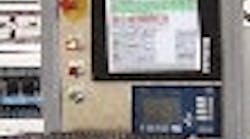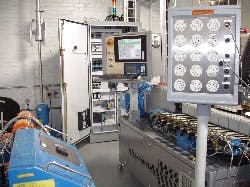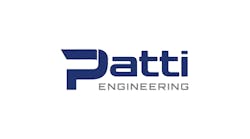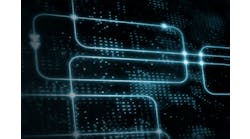“There are 100 different types of devices from DCSs to PLCs to PCs that can perform DAQ functions, but there are still a few aspects of DAQ that remain fixed,” says Steve Byrum, DAQ product manager at Yokogawa Corp. of America’s Network Solutions division. “Despite all the recent changes, DAQ is still all about measuring and recording a signal.
“And, while measurement hardware hasn’t changed much, what has changed radically in the past 10 years—and improved the lives of those who need plant data—is the connectivity of those measurements to the PC environment. This has happened mostly via Ethernet networking, which has enabled standardization on more readily available platforms including OPC. It’s far easier to implement a DAQ recording system now and merge plant data with a PC platform due to the ease of the networking. These days, if your instrumentation device doesn’t have an Ethernet port and/or a USB interface, then you’re odd man out.”
John Alvey, owner/engineer at Automation Troubleshooters, a system integrator in Placentia, Calif., adds, “Some people in oil production need to see their data constantly updated. Others only need to see their data if it moves out of tolerance. But either way you need hardware to collect the data and record the jumps, and you need software to further gather the information, run it thorough a dynamic data exchange function and then usually move it to a Windows-based system.” (See Figure 1 below)
FIGURE 1: PC-BASED DAQDefining DAQs
While any sensor/actuator combination can respond to immediate status changes, DAQ is distinguished by that fact that it’s based on gathering multiple snapshots or slices of time, analyzing them together and usually spotting and being able to act on otherwise unseen trends. Still, the old days of data recorders, HMI/SCADA software or even PCI boards always looking the same and always performing a traditional well-defined set of functions are long gone. DAQ devices and systems are taking on as many new functions and forms as the industrial PCs and software in whose technological gravity well they’re being pulled along.
“The main DAQ trends have been from custom-designed, proprietary systems to off-the-shelf, open, PC-based architectures, and users adapting to this new flexibility,” says Brian Betts, National Instruments’ DAQ product manager.
What cosmic force is driving this diversification? Economics, of course, and the hunger of more and smaller end users and manufacturers for faster and better information to help them compete.
“DAQ systems were originally used in refineries and other large applications that needed centralized control and the ability to check intricate processes. Now, DAQ’s a lot less expensive, so it can be used in smaller applications to provide accurate day-by-day trend information, and help those companies operate more efficiently,” says Alvey. “A lot of smaller-scale, 24/7 facilities are running multiple lines and knocking out parts, and they need to keep tabs hour by hour or even minute by minute because they’re getting beaten up by Asian competitors. They can’t wait until the end of the day to find out how bad a shift was because they can loose their shirt in one day.
“So, we can set up a real-time clock that shows cycles or parts per minute and write a micro PLC program in ASCII to gather and display a couple of digital or analog signals on LED signs or wherever they’re needed. This can let an operator know that his process is sucking mud and needs maintenance by 8 a.m., when he wouldn’t have noticed it otherwise.”
New York City’s Metropolitan Transit Authority recently used Logic Beach’s DAQ equipment to monitor increased, system-wide electrical current draw more closely when it was running added subway trains in the wake of 9/11. Source: 2004 Metropolitan Transportation Authority.
Alvey adds that having two DAQ system in place can be even more useful because each can collect different data about the same application. For example, one DAQ can gather basic, real-time production data, such as units, produced, scrapped, and downtime, while the other DAQ checks more diagnostic data and the time frames associated with it; for example, jamming incidents plotted over a week, which could show a bigger picture of proactive maintenance needed that wouldn’t be visible at the hourly level.
“Many facilities also have ancillary equipment, such as compressors or chillers, which no one usually thinks to monitor or visit,” he says. “However, these also can be tied to micro-PLCs to show data from simple signals, such as pressure or temperature, which can indicate how well they’re operating or if they might have a problem.”
Coping with Diversity
Even though DAQ systems have gone to paperless, videographic, digital and even wireless, and many of their tasks are split up and taken over by other types of devices, end users can find the right solution by staying focused on the signal they need and then choosing the most appropriate course for it to take.
“There are several physical paths through PLCs, RTUs, fieldbuses, Ethernet and wireless, but there are only three main types of data: real-time for process conditions; late or non-real-time via polling and SCADA systems; and manually entered. All of them can be historized to produce reports for production planning,” says Steve Garbrecht, Wonderware’s infrastructure and platform products manager. “From our perspective, the big news now is OPC Unified Architecture (OPC-UA), which allows DAQs to gather all their data in a consistent manner and a common language format regardless of the hardware used.”
Smaller, more varied applications are also finding they can use DAQ because their data storage capabilities have grown exponentially in recent years. “We’ve gone from floppy disks to costly PCMCIA cards to smart media, Flash cards, USB drives and now secured digital (SD) cards that can hold 2 to 4 gigabytes,” says Pat Cashwell, ABB’s field instrumentation VP. “DAQs used to reach their data storage capacity in a few days or weeks, but now they may not reach it for the lifetime of the device. All of these advances allow DAQ systems that don’t need batteries, are far less temperature sensitive and much more reliable, and make it easier for users to analyze their trends.”
For example, ABB’s Screen Master is a field-mountable, video-enabled DAQ that can send emails and has an embedded web server which allows users to dial in, log on to the recorder and see live versions of all its displays and logs. Its file transfer protocol (FTP) and scheduler also lets users define when and what reports will be sent back to them.
Faster and larger data storage also helps end-users meet specification requirements and documentation rules in their increasingly regulated applications. “The FDA is asking more manufacturers to adhere to its PAT specifications, which means they have to do more validation on their recipes and batches,” says Mike Triassi, marketing director for Optimation, a system integrator in Rochester, N.Y. “Securing testing sample data to prove that a final product matches defined specs is outside the typical control system’s usual capabilities, but DAQ systems can help because they’ve been used in the past to provide similar data on product condition and equipment health.”
Accelerating data speed also is enabling many newer DAQ applications, according to Betts. “One new PC bus standard, PCI Express, runs at 4 Gbps, and has 60 times the bandwidth as PCI bus, which ran at 13 Mbps just two years ago,” says Betts. “Also, where people recently did DAQ with PCI plug-in boards with their PCs, they now can use USB-based I/O and networking. This eliminates many former barriers and lets more users monitor signals such as temperature and vibration that they couldn’t do before.”
Likewise, Mark Albert of Logic Beach says one of his users at a municipal wastewater facility employs Logic Beach’s DAQ system to back up his SCADA system. “So if the network goes down and they lose a day’s worth of data, then they can get it from the logger,” he says. “DAQs can also help with regulatory compliance because some, like our IntelliLogger, can automatically email data to an FTP site or to whomever else is supposed to get it.”
In fact, when the New York/New Jersey Port Authority was running added subway trains in the wake of 9/11, it used Logic Beach’s DAQ equipment to monitor its increased, system-wide electrical current usage more closely. “We programmed our data loggers to collect current demand data seven times per second for four hours during each morning and afternoon rush hour,” says Albert, “and this helped the Metropolitan Transit Authority’s engineers better understand and manage their additional current draw.”
Similarly, Greg Richards, controls engineers and maintenance manager at Quadrant Engineered Plastic Products in Reading Pa., says his company used to have costly overruns in its 30-day production process because Amp readings from its heaters didn’t indicate soon enough when a product run was starting to get overcooked and go bad, which could destroy $70,000 worth of high-grade plastic. Quadrant’s engineers previously used chart recorders and would simply take an oven offline if a problem occurred, but this would sacrifice even more time.
“We recently put 20 permanent-mount Omega thermocouples on one oven and routed their data back to a Siemens NS7-317 PLC, which send it via Ethernet to our Siemens Win CC SCADA computer, where it can be viewed historically,” says Richards. “This gives us real-time profiling and lets us ramp up or down as needed and save far more plastic. We now have this DAQ system on four ovens, and we’re going to add it to 10 more.”
Alvey add that these types of DAQ-based gains are especially possible if engineers work with their IT departments. “When a big company tells me they want to install or update their DAQ system because their end users need data, I tell them to get IT involved from the get go because whatever operating system they’re on, they’ll need IT to help determine what platforms are available at particular levels, what type of data exchange they need, and if they should dynamically update their data,” says Alvey.
Hardware can say how much material or product you’ve got and what condition it’s in, but then you have to decide where to put that data, and for that you have to involve the IT guys. You just need to be flexible and cooperative from the start.
“My philosophy is to give information to everybody in a company because every operation is trying to run ‘lean and mean.’ Having real-time data means what you have to do is right there in front of you all the time, and so there’s a real trend away from having production meetings. DAQ is helping that trend because it meets those real-time goals and targets.
“You also need to decide if your DAQ system is going to be just DAQ or DAQ and control. If it’s both, then you also have to decide who will have control, whether there’s Internet access, what are the operating and tuning parameters, and then security becomes a bigger issue as well. If you don’t need control with DAQ, then don’t do it because you can open a whole other hornet’s nest. Just leave the control local if you can and don’t put it through the web either if you can avoid it.”
However, Cashwell says DAQ’s move into control is probably inevitable. “DAQs can take on so many DCS capabilities that they’re almost like DCSs now,” adds Cashwell. “In the future, I think we’re going to see a lot more blending of DAQs and DCSs. As even more computing power and data storage is added, the next logical step is for DAQs to add more control functions.”








